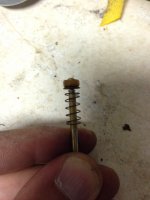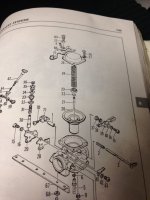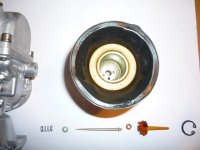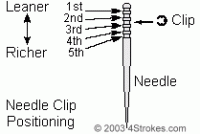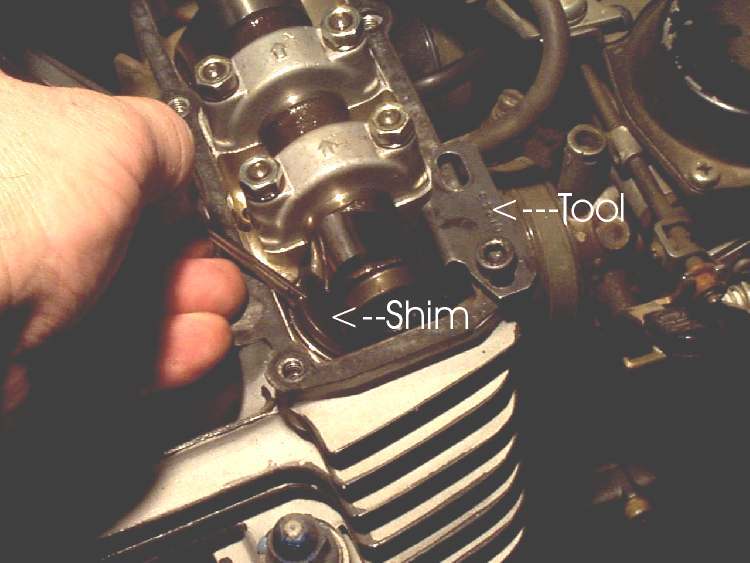treitz
Over 1,000 Posts
Alright... so I double checked my fuel height last night and they're actually all good. Checked my coil wiring and it's all good (couldn't have been that easy). Checked spark again and it's all good. I mean really good on all 3.
Man I'm confused
The only thing I hadn't done before last night was take apart the top half of the carbs... so I did that to check the needles. They were all the same, and the clips were all in the middle spot. However I did notice something strange... My needles have a shim and a spring under them while the image in the manual doesn't have either (see attached images for reference). I wonder if the shim and needle were added by a PO but shouldn't have been? And also, I should probably bump my needle up a clip position while I'm at it given the open intake and exhaust. Thoughts?
Man I'm confused
The only thing I hadn't done before last night was take apart the top half of the carbs... so I did that to check the needles. They were all the same, and the clips were all in the middle spot. However I did notice something strange... My needles have a shim and a spring under them while the image in the manual doesn't have either (see attached images for reference). I wonder if the shim and needle were added by a PO but shouldn't have been? And also, I should probably bump my needle up a clip position while I'm at it given the open intake and exhaust. Thoughts?


